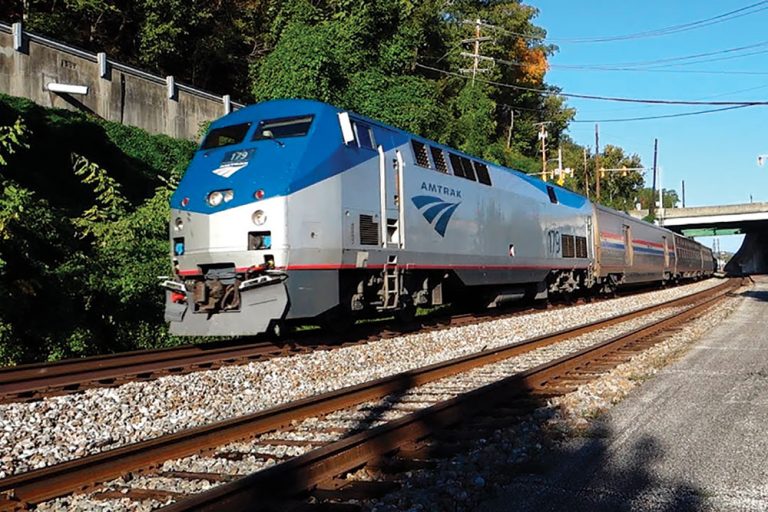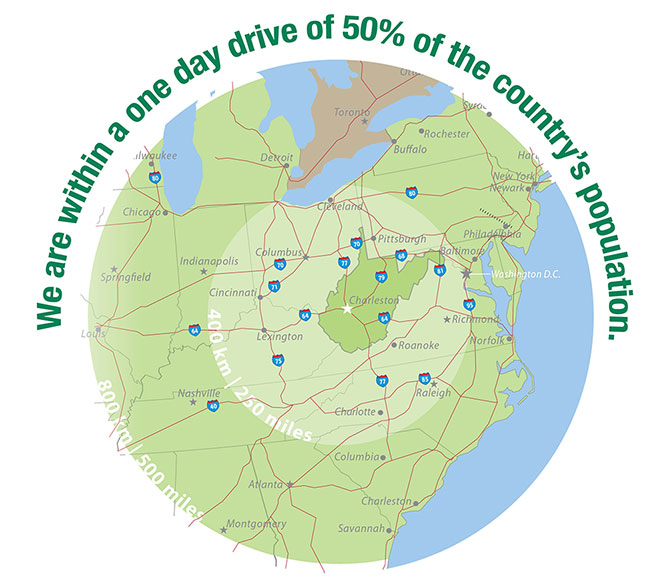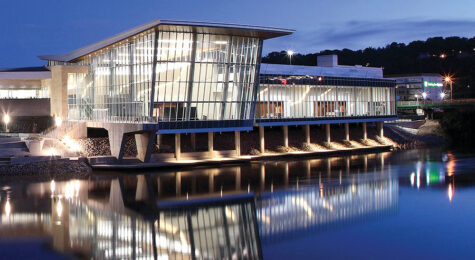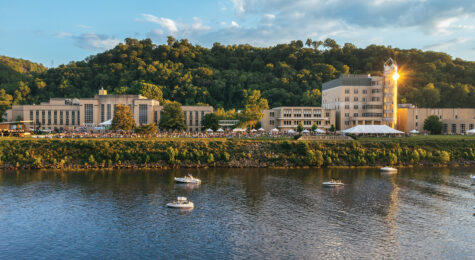All Roads Lead to Advantage Valley, WV
Advantage Valley’s extensive transportation network moves people and products.

Traveling to and from Advantage Valley is simple.
The region, which includes the Charleston and Huntington MSAs, is well connected, thanks to an integrated transportation network that includes easy access to interstates and major U.S. highways, passenger rail service via Amtrak in Charleston and Huntington, and commercial service from two airports.
In This Article
Road and Rail
Advantage Valley’s location advantage puts it within a day’s drive of more than 160 million people and provides ready access to major East Coast and Midwest markets. The region is served by six major highways and is at the intersection of key north-south and east-west routes, such as interstates 64, 77 and 79, U.S. Highways 19 and 35, and West Virginia Route 23. Those convenient roads put Advantage Valley within a 500-mile radius of half the U.S. population and one-third of the Canadian market.
Advantage Valley is served by Class I rail carriers CSX and Norfolk Southern.
Water Assets
Another transportation asset is the Port of Huntington, which handles more than 80 million tons of cargo each year and is the second-largest inland port in the U.S.
The Ohio, Big Sandy, Elk and Kanawha rivers run through the region, navigable for cargo shipping and truck-to-barge capabilities.

High Hopes
For air travelers, direct service is available to major hubs from Huntington Tri-State Airport and Charleston’s Yeager Airport. Commercial air service at Huntington Tri-State (HTS) includes carriers Allegiant Air and American Airlines, and HTS also handles military and general aviation traffic.
FedEx maintains a major presence in the region, utilizing HTS for ground transport and multiple B-757 heavyfreight flights each day. In fact, HTS hosts the only FedEx 757 hub in West Virginia.
Yeager Airport in Charleston offers commercial airline service from American, Delta Air Lines, Spirit Airlines and United Airlines.
Before the COVID-19 outbreak, the airport was handling about 750 passengers a day. While ridership has slowly recovered, it might take several months for passenger numbers to return to the airport’s peak, says Nick Keller, Yeager Airport director.
The airport normally accounts for more than $175 million in economic impact, with 1,800 direct and indirect jobs.
“My vision is for Yeager Airport to eventually become the most important economic engine for the state of West Virginia,†he says. “Not only do we want to add more airlines and increase passenger traffic, we also want to work with aerospace companies to make Advantage Valley a hot spot for the nation’s growing aerospace industry.”
Keller says the airport has plans with Marshall University to establish a flight school on the airport grounds.
“There is a worldwide shortage for pilots, and that shortage is estimated to continue for more than 20 years,†he says. “Working with Marshall on a flight school is another way that Yeager is looking to advance our air transportation industry even more.”
Named for Chuck
Yeager Airport is named for West Virginia native Chuck Yeager, the first pilot to break the sound barrier. The airport is in the midst of several upgrades and expansion projects. These include a just-completed $3.6 million solar energy initiative and the first phase of a runway rehabilitation project that began in May 2020.
“We’re also planning a $2.4 million U.S. Customs building that will be especially convenient for corporate jets flying with less than 23 people on board,†Keller says.
If you’d like to learn more about the Advantage Valley area, check out the latest edition of Livability: Advantage Valley, WV.



